Over the course of the past six months, we have seen quite of few of the major well-known European tillage equipment manufacturers acquire mechanical weeding companies.
This includes companies such as Kverneland, Pöttinger and Väderstad which have bought up lesser-known firms, namely French-based BC Technique, Italian-based MaterMacc and the Danish TRV product range from Thyregod. However, Lemken was first to take the leap, acquiring Steketee back in the autumn of 2018.

Steketee offer a wide range of equipment, with a huge array of hoes and specific tools available depending on the crop at hand.
Steketee
Steketee is a Dutch manufacturer, which offers a host of mechanical weeding options. Based in the southwest of the country, the company initially employed 30-35 staff, which has now increased to 66 people.
At the time of the acquisition, Steketee also manufactured a range of tillage machines including a front-mounted swing furrow press and a plough range under the Rumptstad name. Soon after the takeover, Lemken decided to put a halt to the production of equipment under the Rumptstad banner, and focus on mechanical weeding technology.
Since the acquisition, Steketee has been channelled through Lemken’s wider dealer network. In that time, Lemken has managed to triple Steketee’s turnover and further develop its range of mechanical weeders. At present, its three largest markets are France, Germany and China.
It is expected that in time the range may be sold under the Lemken blue livery and the Steketee name could be phased out, but that’s a few years away just yet. Lemken noted that this is what it did with the two sprayer makers, RTS and Jacoby, which it purchased in 2005.

Pictured is Steketee's recently introduced EC-Ridger for weed control in ridged crops such as potatoes and carrots.
Ceasing sprayer production
At the end of 2020, Lemken made the decision to permanently discontinue the production of its conventional field sprayers. At the time, Lemken CEO Anthony Van der Ley said that after 10 years in this market the company did not achieve a market share worth continuing production for, and that the legal requirements for sprayers were increasing and becoming more and more disparate.
Lemken’s then sprayer manufacturing facility in Haren (Germany), has since been expanded and is today used for the assembly of seed drills. This also allowed additional capacity and increased cultivation equipment manufacturing at its main site in Alpen.
The move saw the firm place more of a focus on what it calls its sustainable crop care equipment ranges, which concentrates on the rebranded Sulky fertiliser spreaders and mechanical weeder solutions.

Probably the most impressive and complex piece of kit in the firms offering, this flagship offering essentially carries out autonomous hoeing with thanks to artificial intelligence (AI).
New factory
At the time of the Steketee takeover, Lemken made the decision to keep production in the Netherlands as that is where the staff expertise was located. The company took out a five-year lease on the factory from the brand’s previous owner.
That lease will end this year, and the German manufacturer has recently announced that it will be investing in a new factory for Steketee. This is set to be built on a 5ha site in Dinteloord (North Brabant), 24km away from the current Steketee manufacturing facility in the Netherlands.
Lemken says this new factory will allow output to increase by two to three times its current production. The factory is scheduled to open its doors within the next 10 months, and will employ at least 30 additional members of staff.
Iljan Schouten, managing director of Steketee and the head of Lemken’s crop care division, said: “We [Steketee] have a good position in Western Europe and we see China and Eastern Europe growing more and more. We sold our first machine in Australia this year, and also in New Zealand.
“We have a very clear focus on North America. Last year, we opened a sales subsidiary in the US and we see lots of potential there.
“Canada has sold quite a lot of machines this year, so we think it’s all only at the beginning for this company.”

Lemken recently added a new ‘SprayHub’ front mounted tank which works in tandem with a rear-mounted mechanical hoeing unit.
The product range
Steketee offer a wide and impressive range of equipment, with a huge array of hoes and specific tools available depending on the crop at hand and its specific growth stage.
When you get a glance at the vast selection and optional specification of machines being assembled on the factory floor, you wouldn’t be long dismissing the concept that mechanical weeding is limited to simplistic tine harrows.
The manufacturer has a whole host of machine variables designed to work with crops such as cereals, beet, maize, potatoes and vegetables. Steketee build machines to work on crops sown in both ridges and on the flat.
Taking the EC-Weeder as an example – it can be configured for all crops which are seeded in rows. It works for row widths from 15cm to 150cm, with working widths up to 17m, 70cm passage height while working at driving speeds of up to 15km/h and comes with either automatic or manual steering systems.

Lemken recently announced that it will be investing in a new factory for Steketee 24km away from the current manufacturing facility in the Netherlands.

At present, its three largest markets are France, Germany and China.
In terms of machine steering, there are two options. Manual steering is the more basic option, and involves an operator sitting in a seat on the rear of the machine, controlling the machine visually via a joystick.
At the other end of the spectrum, the IC-Light is an automatic camera steering system which enables precise hoeing at day or night. This bases its decision on camera images processed by a job computer.
Steketee introduced camera steering systems in 2000, before developing its own system in 2007. 
This is Steketee's recently introduced self-steering frame option which works on all mechanical hoes, including third party machines.
One-pass spray and hoe
Not entirely moving away from chemicals or forgetting its previous developments, Lemken recently added a new SprayHub front-mounted tank which works in tandem with a rear-mounted mechanical hoeing unit. Lemken says that combining the two elements ensures that concentrated spraying only takes place within rows and claims that farmers can save 40-60% on spraying agent. 
Since the acquisition, Lemken have managed to triple Steketee’s turnover and further develop its range of mechanical weeders.
Steering frame
The EC-Steer is a parallel steering frame designed to make controlling hoeing machines much easier. This works with branded or a third-party machine, and allows you to upgrade any hoeing machine with a steering system controlled via an in-cab joystick. This is advantageous for those who want to use hoeing machines for various row widths with a single steering system.

Iljan Schouten explained that despite Lemken pulling away from the sprayer market and heavily investing in mechanical weeding, they don’t see a future totally without the use of chemicals.
AI autonomous hoeing
In 2022, the manufacturer introduced an automatic intra-row hoeing machine, namely the IC-Weeder AI. Probably the most impressive and complex piece of kit in the firm’s offering, it essentially carries out autonomous hoeing with thanks to artificial intelligence (AI).
Initially developed for sugar beet, plants were manually marked at various stages of development. An algorithm used this data to autonomously create a method for identifying sugar beet plants based on their colour, texture, shape, size and leaf position. The manufacturer says this allows the machine to work in conditions that are too complex for conventional image recognition systems.
The cameras for the individual rows are located under the hood of the machine, thus not affected by external light. During a pass, the cameras transmit 30 images per second to the on-board computer, producing a plant recognition ratio of over 95%. Following sickle-shaped pneumatically controlled knives move into the rows and hoe as close as 2cm from each plant.

The new factory is scheduled to open its doors within the next ten months, and will employ at least 30 additional members of staff.
Conclusion
Iljan Schouten explained that despite Lemken pulling away from the sprayer market and heavily investing in mechanical weeding, they don’t see a future totally without the use of chemicals.
He quoted a quote from a crops open day he visited some years ago that said – “mechanical weed control when possible, and chemical when it’s not”. He explained that the company feel that mechanical weed control will play more and more of a role in conventional tillage systems in the future, as more pressure comes on the widespread use of chemicals.
Over the course of the past six months, we have seen quite of few of the major well-known European tillage equipment manufacturers acquire mechanical weeding companies.
This includes companies such as Kverneland, Pöttinger and Väderstad which have bought up lesser-known firms, namely French-based BC Technique, Italian-based MaterMacc and the Danish TRV product range from Thyregod. However, Lemken was first to take the leap, acquiring Steketee back in the autumn of 2018.

Steketee offer a wide range of equipment, with a huge array of hoes and specific tools available depending on the crop at hand.
Steketee
Steketee is a Dutch manufacturer, which offers a host of mechanical weeding options. Based in the southwest of the country, the company initially employed 30-35 staff, which has now increased to 66 people.
At the time of the acquisition, Steketee also manufactured a range of tillage machines including a front-mounted swing furrow press and a plough range under the Rumptstad name. Soon after the takeover, Lemken decided to put a halt to the production of equipment under the Rumptstad banner, and focus on mechanical weeding technology.
Since the acquisition, Steketee has been channelled through Lemken’s wider dealer network. In that time, Lemken has managed to triple Steketee’s turnover and further develop its range of mechanical weeders. At present, its three largest markets are France, Germany and China.
It is expected that in time the range may be sold under the Lemken blue livery and the Steketee name could be phased out, but that’s a few years away just yet. Lemken noted that this is what it did with the two sprayer makers, RTS and Jacoby, which it purchased in 2005.

Pictured is Steketee's recently introduced EC-Ridger for weed control in ridged crops such as potatoes and carrots.
Ceasing sprayer production
At the end of 2020, Lemken made the decision to permanently discontinue the production of its conventional field sprayers. At the time, Lemken CEO Anthony Van der Ley said that after 10 years in this market the company did not achieve a market share worth continuing production for, and that the legal requirements for sprayers were increasing and becoming more and more disparate.
Lemken’s then sprayer manufacturing facility in Haren (Germany), has since been expanded and is today used for the assembly of seed drills. This also allowed additional capacity and increased cultivation equipment manufacturing at its main site in Alpen.
The move saw the firm place more of a focus on what it calls its sustainable crop care equipment ranges, which concentrates on the rebranded Sulky fertiliser spreaders and mechanical weeder solutions.

Probably the most impressive and complex piece of kit in the firms offering, this flagship offering essentially carries out autonomous hoeing with thanks to artificial intelligence (AI).
New factory
At the time of the Steketee takeover, Lemken made the decision to keep production in the Netherlands as that is where the staff expertise was located. The company took out a five-year lease on the factory from the brand’s previous owner.
That lease will end this year, and the German manufacturer has recently announced that it will be investing in a new factory for Steketee. This is set to be built on a 5ha site in Dinteloord (North Brabant), 24km away from the current Steketee manufacturing facility in the Netherlands.
Lemken says this new factory will allow output to increase by two to three times its current production. The factory is scheduled to open its doors within the next 10 months, and will employ at least 30 additional members of staff.
Iljan Schouten, managing director of Steketee and the head of Lemken’s crop care division, said: “We [Steketee] have a good position in Western Europe and we see China and Eastern Europe growing more and more. We sold our first machine in Australia this year, and also in New Zealand.
“We have a very clear focus on North America. Last year, we opened a sales subsidiary in the US and we see lots of potential there.
“Canada has sold quite a lot of machines this year, so we think it’s all only at the beginning for this company.”

Lemken recently added a new ‘SprayHub’ front mounted tank which works in tandem with a rear-mounted mechanical hoeing unit.
The product range
Steketee offer a wide and impressive range of equipment, with a huge array of hoes and specific tools available depending on the crop at hand and its specific growth stage.
When you get a glance at the vast selection and optional specification of machines being assembled on the factory floor, you wouldn’t be long dismissing the concept that mechanical weeding is limited to simplistic tine harrows.
The manufacturer has a whole host of machine variables designed to work with crops such as cereals, beet, maize, potatoes and vegetables. Steketee build machines to work on crops sown in both ridges and on the flat.
Taking the EC-Weeder as an example – it can be configured for all crops which are seeded in rows. It works for row widths from 15cm to 150cm, with working widths up to 17m, 70cm passage height while working at driving speeds of up to 15km/h and comes with either automatic or manual steering systems.

Lemken recently announced that it will be investing in a new factory for Steketee 24km away from the current manufacturing facility in the Netherlands.

At present, its three largest markets are France, Germany and China.
In terms of machine steering, there are two options. Manual steering is the more basic option, and involves an operator sitting in a seat on the rear of the machine, controlling the machine visually via a joystick.
At the other end of the spectrum, the IC-Light is an automatic camera steering system which enables precise hoeing at day or night. This bases its decision on camera images processed by a job computer.
Steketee introduced camera steering systems in 2000, before developing its own system in 2007. 
This is Steketee's recently introduced self-steering frame option which works on all mechanical hoes, including third party machines.
One-pass spray and hoe
Not entirely moving away from chemicals or forgetting its previous developments, Lemken recently added a new SprayHub front-mounted tank which works in tandem with a rear-mounted mechanical hoeing unit. Lemken says that combining the two elements ensures that concentrated spraying only takes place within rows and claims that farmers can save 40-60% on spraying agent. 
Since the acquisition, Lemken have managed to triple Steketee’s turnover and further develop its range of mechanical weeders.
Steering frame
The EC-Steer is a parallel steering frame designed to make controlling hoeing machines much easier. This works with branded or a third-party machine, and allows you to upgrade any hoeing machine with a steering system controlled via an in-cab joystick. This is advantageous for those who want to use hoeing machines for various row widths with a single steering system.

Iljan Schouten explained that despite Lemken pulling away from the sprayer market and heavily investing in mechanical weeding, they don’t see a future totally without the use of chemicals.
AI autonomous hoeing
In 2022, the manufacturer introduced an automatic intra-row hoeing machine, namely the IC-Weeder AI. Probably the most impressive and complex piece of kit in the firm’s offering, it essentially carries out autonomous hoeing with thanks to artificial intelligence (AI).
Initially developed for sugar beet, plants were manually marked at various stages of development. An algorithm used this data to autonomously create a method for identifying sugar beet plants based on their colour, texture, shape, size and leaf position. The manufacturer says this allows the machine to work in conditions that are too complex for conventional image recognition systems.
The cameras for the individual rows are located under the hood of the machine, thus not affected by external light. During a pass, the cameras transmit 30 images per second to the on-board computer, producing a plant recognition ratio of over 95%. Following sickle-shaped pneumatically controlled knives move into the rows and hoe as close as 2cm from each plant.

The new factory is scheduled to open its doors within the next ten months, and will employ at least 30 additional members of staff.
Conclusion
Iljan Schouten explained that despite Lemken pulling away from the sprayer market and heavily investing in mechanical weeding, they don’t see a future totally without the use of chemicals.
He quoted a quote from a crops open day he visited some years ago that said – “mechanical weed control when possible, and chemical when it’s not”. He explained that the company feel that mechanical weed control will play more and more of a role in conventional tillage systems in the future, as more pressure comes on the widespread use of chemicals.













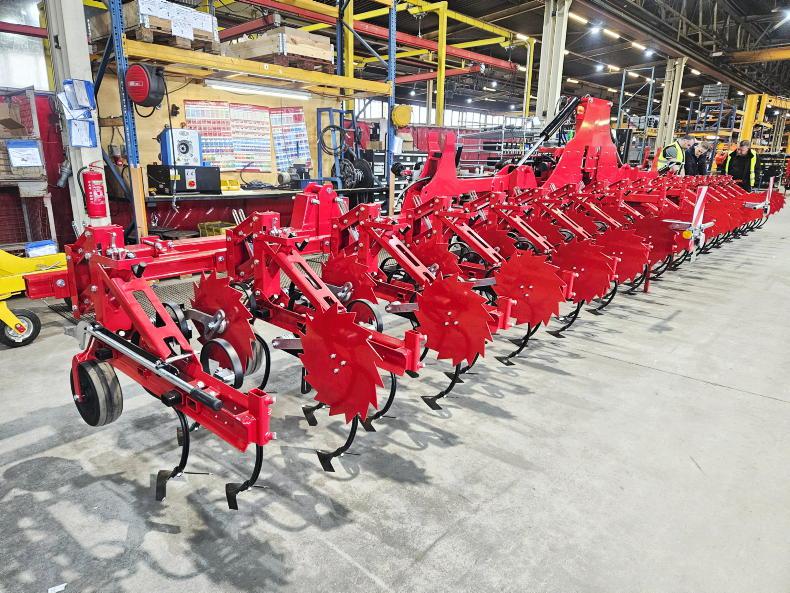

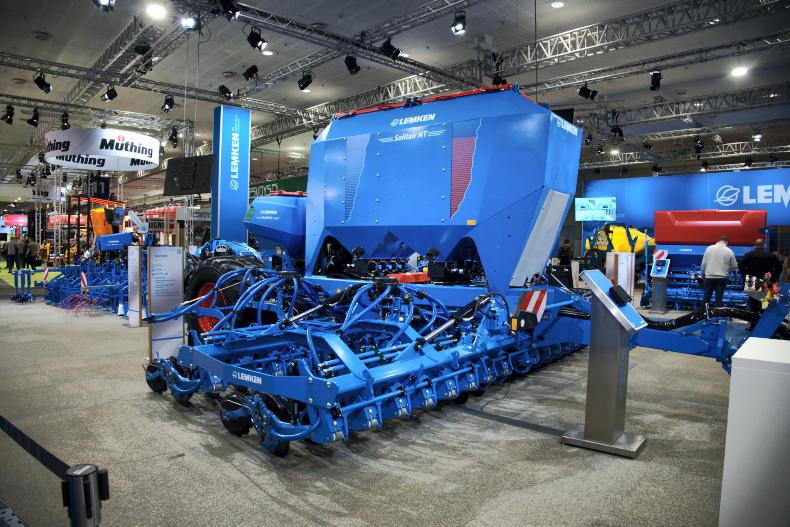
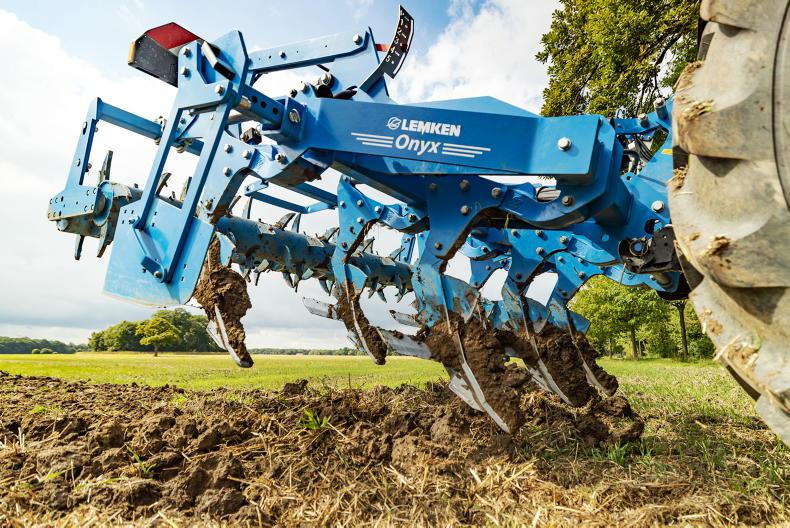
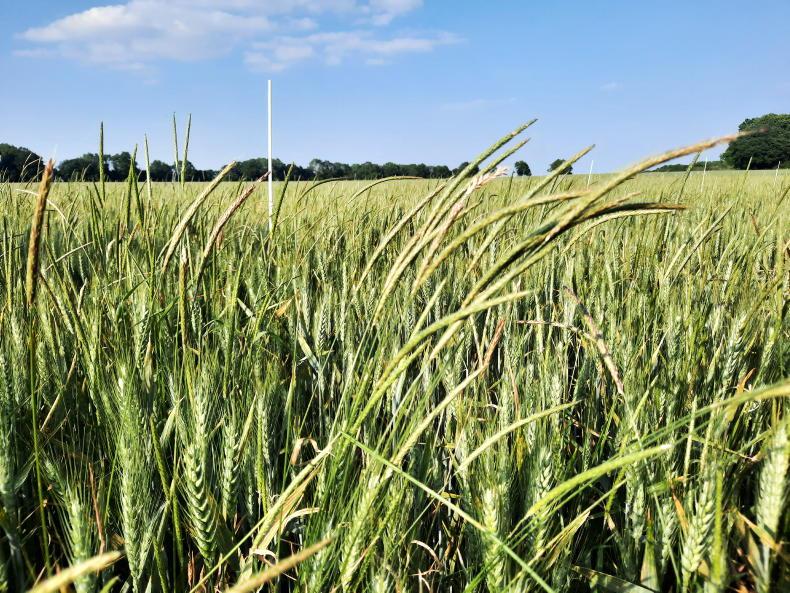
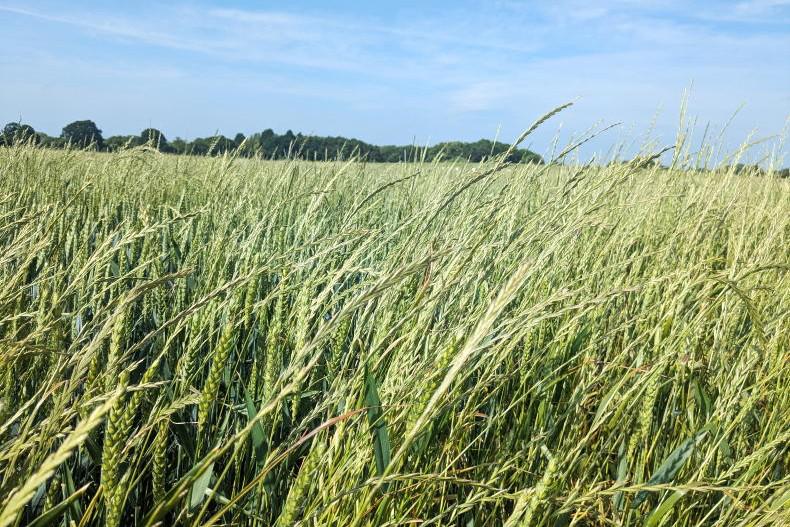
SHARING OPTIONS